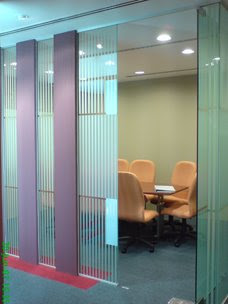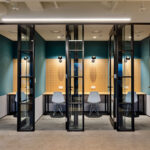When designing an office, one of the most crucial pieces of furniture to consider is the office chair. After all, employees spend a significant portion of their day sitting at their desks, so choosing the right chair is vital for both their comfort and productivity. However, comfort doesn’t have to come at the cost of style. With careful selection, you can find office chairs that not only support good posture and well-being but also complement the overall look of the office.
1. The Importance of Ergonomics for Employee Well-Being
Ergonomics plays a fundamental role in promoting comfort, reducing discomfort, and preventing long-term health issues. Sitting for extended periods without the right support can lead to a range of problems, including back pain, poor posture, and even repetitive strain injuries. These health concerns can affect employee well-being and ultimately productivity.
An ergonomic chair is designed to support the natural curves of the spine, provide adequate lumbar support, and allow the user to adjust the chair to their specific body type. Features such as adjustable armrests, seat depth, and tilt mechanisms enable users to fine-tune their chair for maximum comfort. This personalised approach helps reduce muscle strain and promotes better posture, making employees feel more comfortable throughout the day.
When selecting office chairs, look for designs that support the lower back while allowing freedom of movement. Chairs with a backrest that provides lumbar support are especially helpful, as they encourage the spine’s natural curve. For employees who spend a lot of time seated, an adjustable seat height and the ability to recline can significantly improve comfort and reduce fatigue.
2. Enhancing Productivity Through Comfort
A comfortable employee is a productive employee. When staff members are comfortable in their work environment, they are more likely to stay focused and perform at their best. Chairs that promote good posture and comfort can reduce distractions caused by aches and pains, allowing employees to maintain their attention on tasks at hand.
Additionally, ergonomic office chairs contribute to overall energy levels. Employees who are not experiencing physical discomfort are more likely to remain alert and engaged in their work. By choosing chairs that encourage movement and flexibility, you can foster a workspace that supports both mental and physical well-being.
The best ergonomic chairs also help to prevent long-term issues, such as chronic neck or back pain, which can result in absenteeism. Investing in ergonomic seating is not just about immediate comfort but also about creating a healthier work environment in the long run.
3. Aesthetic Considerations for a Stylish Office
While functionality is key, the design of office furniture also contributes to the overall aesthetic of the workplace. A well-designed office creates a positive, inspiring environment for employees and visitors alike. An office chair, when chosen thoughtfully, can seamlessly blend with the surrounding decor, adding to the atmosphere without compromising on comfort.
When considering office chairs, think about the colour scheme, materials, and overall style of the office. Whether your office has a modern, minimalist feel or a more traditional look, there are chairs that can complement the existing design. For example, leather chairs often evoke a sense of luxury and professionalism, while fabric chairs offer a softer, more casual appearance.
For open-plan offices or collaborative spaces, a chair with a sleek, contemporary design can contribute to the modern aesthetic. Similarly, if the office has a more relaxed or creative vibe, opting for chairs with bold colours or unique designs can add personality and encourage a comfortable, open environment.
Ultimately, the office chair should align with the overall tone of the office. Whether you prefer a monochrome look or a vibrant splash of colour, there are plenty of ergonomic chairs that can reflect your company’s values and personality while still being comfortable and practical.
4. Flexibility and Versatility in Office Seating
As offices evolve, so too do the needs of employees. The flexibility of office chairs can help accommodate different tasks and work styles. For instance, some employees may need to adjust their seating for quick meetings or brainstorming sessions, while others may need more stability for long periods of desk work.
Chairs with adjustable features, such as armrests, height, and tilt functions, offer flexibility for various users and different tasks. Adjustable lumbar support allows users to fine-tune the level of support needed throughout the day, while a swivel function provides freedom of movement, enabling employees to reach different parts of their workspace without straining.
Additionally, stacking or foldable chairs are excellent options for spaces that require versatile seating arrangements. These chairs can be easily stored away when not in use, freeing up space for other office activities or events. Whether for a breakout area or a larger meeting room, these chairs can be rearranged to suit different needs without compromising on comfort.
5. The Balance Between Cost and Quality
When choosing office chairs, it’s important to find a balance between cost and quality. While it might be tempting to go for the cheapest option, low-quality chairs can lead to discomfort and even health problems, ultimately affecting productivity. On the other hand, high-quality ergonomic chairs are an investment in employee health and overall well-being.
While ergonomic chairs may have a higher upfront cost, they can provide long-term savings by reducing the risk of workplace injuries and the associated medical costs. Moreover, investing in good office furniture reflects a company’s commitment to employee well-being and can improve overall morale.
6. Selecting the Right Chair for Your Office Needs
The ideal office chair will depend on your office’s specific needs and the tasks employees perform. For an office that requires a lot of sitting and computer work, look for a chair that offers strong lumbar support, adjustable height, and a swivel function. If your workspace involves more collaboration, consider chairs that are lightweight, stackable, and easy to move around.
For small offices or spaces with limited room, consider chairs that are compact yet comfortable. Adjustable task chairs with breathable mesh backrests can provide both support and flexibility while occupying minimal space.
Conclusion
Choosing the right office chair is about striking the perfect balance between ergonomics and aesthetics. Comfort and functionality are essential for promoting employee well-being and productivity, while style and design contribute to creating a pleasant and inspiring work environment. By selecting chairs that are adjustable, supportive, and visually appealing, you can create a workspace that encourages both comfort and collaboration.
At Singapore Interior Pte. Ltd., we understand the importance of well-designed office furniture that balances comfort, style, and productivity. Whether you’re renovating an existing office or setting up a new one, we can help you select office furniture that meets your unique needs and enhances your workspace.
Need Help to Plan? Call Us Now
Contact us today to embark on a transformative interior design and renovation journey with Singapore Interior Pte. Ltd. Together, we will create spaces that not only impress but also inspire, elevating your lifestyle and leaving a lasting impression.












